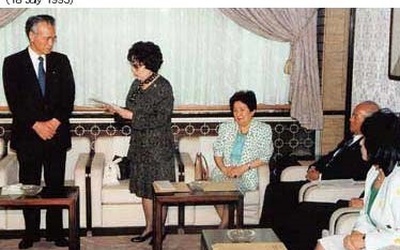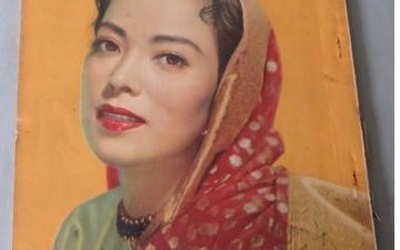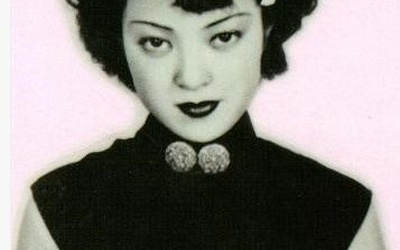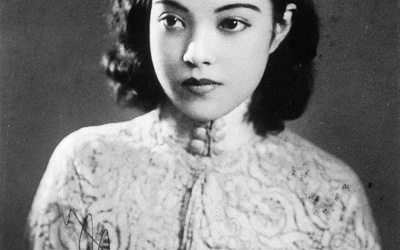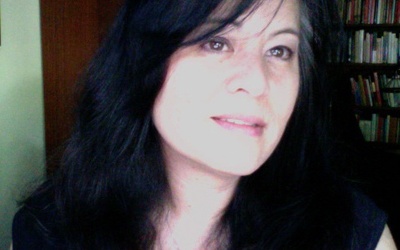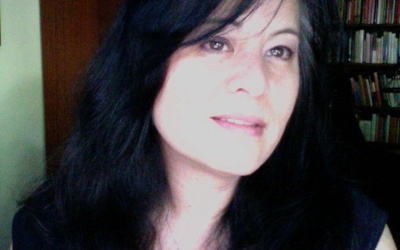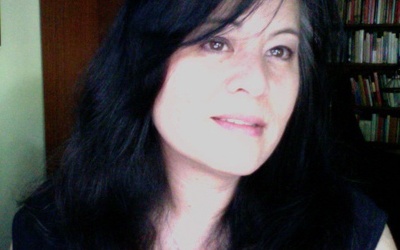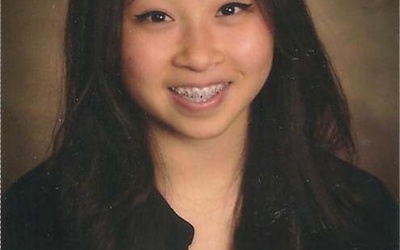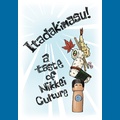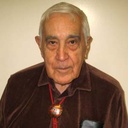
Edward Moreno
@o2gawaraA los 89 años, Ed Moreno ha acumulado aproximadamente 70 años de servicio en el mundo de los medios. Ha recibido galardones por su trabajo como escritor, editor y traductor. Su pasión por la cultura japonesa se inició en 1951 y parece nunca terminar. Ed escribe una columna para el boletín mensual del Centro Comunitario Japonés East San Gabriel Valley en West Covina, CA. Antes de su desaparición, The East Magazine (Tokyo) publicó también algunos de sus artículos originales.
Última actualización en marzo de 2012
Historias de Este Autor
Orquídea del norte - Parte 5
21 de febrero de 2017 • Edward Moreno
Leer la Parte 4 >> De nuevo, nos desviamos un poco del relato personal de Yoshiko para repasar la situación entre China y Japón al final de la Guerra del Pacífico. ¿Por qué? En el 75.º aniversario de lo que el presidente Roosevelt llamó “una fecha que vivirá en la infamia” (7 de diciembre de 1941), muchos medios de comunicación occidentales revisaron las “versiones seguras” de la historia de la Segunda Guerra Mundial: aquellas que retratan a los Aliados (China …
Orquídea del norte - Parte 4
13 de febrero de 2017 • Edward Moreno
Leer la Parte 3 >> China, adoptada durante siglos por poetas y filósofos japoneses como su faro cultural, se había convertido en un desastre pobre, sucio, confuso y plagado de opio, después de años de gobierno autocrático. Después de la muerte de la emperatriz viuda Cixi (1835-1908), parecía que quedaba poco para unir a la nación. 1 Internamente, surgieron señores de la guerra ambiciosos y brutales por todas partes, cada uno de ellos con el objetivo de convertirse en “el …
Orquídea del Norte - Parte 3
6 de febrero de 2017 • Edward Moreno
Leer Parte 2 >> En cada uno de los capítulos anteriores, hemos visto a la joven Yoshiko probar algunas cosas del mundo político real que la rodea: el asesinato de un bandido chino, presenciado desde su ventana; la masacre de un pueblo entero para vengar el incendio de una mina de carbón; y el destrozo de la casa de su mejor amiga Liuba por parte de la policía local. Consideremos por un momento las fuerzas que tiran desde todas direcciones …
Orquídea del Norte - Parte 2
30 de enero de 2017 • Edward Moreno
Leer Parte 1 >> “Fengtian era el castillo de mis sueños”, escuchamos decir a Yoshiko en el capítulo anterior, y tenía innumerables razones para sentirse así. Fengtian, también conocida como Shenyang (y Mukden para los occidentales), se estaba convirtiendo en una nueva y maravillosa ciudad. Este lugar muy antiguo, que el fundador de la dinastía Qing, Nurhaci 1 (1559-1626), hizo su capital en 1625, convertido en el centro de la China manchú y rápidamente descartado, se había convertido en la …
Orquídea del Norte - Parte 1
23 de enero de 2017 • Edward Moreno
Introducción En el 75º aniversario del trágico bombardeo de Pearl Harbor, ¿no cree que es hora de poner fin a toda la información errónea sobre Japón que actualmente se trata como “dogma histórico”? Uno de los conceptos erróneos más flagrantes, que realmente me molesta como insaciable aficionado a la historia, es el lema de que las relaciones entre Japón y China siempre han sido antagónicas y trágicas, porque Japón ha sido el eterno enemigo y el peor opresor de China, …
Persiguiendo a Śākyamuni - Parte 4 de 4
8 de junio de 2015 • Edward Moreno
Leer la Parte 3 >> Escribiendo en el corazón Gracias a las entrevistas con sus asociados, la Dra. Arai encontró numerosos rituales, utilizados por los entrevistados, sobre sus propias interpretaciones de la Cuarta Noble Verdad de que hay un camino que conduce al fin del sufrimiento . La consociada Sra. Honda prefería el ritual de 写経shakyo 1 , o copia de sutras. En el Nihongi , encontramos la práctica budista del shakyo en los inicios de la larga historia de …
Persiguiendo a Śākyamuni - Parte 3 de 4
1 de junio de 2015 • Edward Moreno
Leer Parte 2 >> Llevando el Zen a casa —Este libro echó raíces, dice Arai , el 18 de diciembre de 1996, el día en que murió mi madre. Después de meses de escuchar el zumbido de la máquina de oxígeno, un vacío de silencio llenó su dormitorio. Aunque sabía que ella moriría, cuando me quedé mirando el umbral de la vida y la muerte, sentí como si cualquier paso en falso nos enviaría a un abismo de desesperación... ¿Cómo …
Persiguiendo a Śākyamuni - Parte 2 de 4
25 de mayo de 2015 • Edward Moreno
Leer Parte 1 >> El tortuoso camino de Arai para encontrar a Buda comenzó en Kalamazoo, una “universidad centrada en el cristianismo”, donde su principal interés fue la ética . Viniendo de una iglesia “muy activista cultural, muy preocupada por las cuestiones sociales”, la universidad era maravillosa para las amistades, pero inquietante para la práctica del “cristianismo” entre los miembros del grupo “Christian Fellowship” en el campus. En un mundo tan complejo y diverso como el actual, aferrarse a una …
Persiguiendo a Śākyamuni - Parte 1 de 4
18 de mayo de 2015 • Edward Moreno
Al principio… Para: Dra. Paula K Arai, PhD ・ Profesora asociada y Jefa de Sección de Estudios Religiosos. Universidad Estatal de Luisiana. Asunto: Consulta Estimado Dr. Arai: Disculpe por tomarme la libertad de comunicarme con usted sin haber sido presentado formalmente. He leído con deleite su reciente libro Bringing Zen Home , que me impresionó enormemente, ya que aborda la cuestión del Zen desde muchos ángulos nuevos y apasionantes. Sus hallazgos sobre el Zen en casa parecen un tema ideal …
Takaramono
21 de julio de 2014 • Edward Moreno
Every time the Center [East San Gabriel Valley Japanese Community Center] had a big celebration, but especially at the Installation ceremonies, she would tell me, her lovely eyes wide open: —Aren’t these children marvelous? Don’t you wish every American kid were like them? Look at how they take care of the “seniors,” especially. I wish I could do something for them… She went without fulfilling this special wish of her heart, but I just couldn’t forget it; and that’s how …

